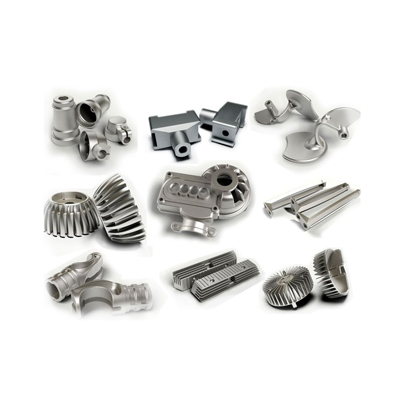Methods of Steel Casting - Ottommo.com
Steel spreading is a specific type of casting including various types of steel. Steel spreadings are utilized when cast irons can not provide adequate stamina or shock resistance. Instances of things that are steel spreadings consist of: hydroelectric turbine wheels, building presses, equipments, railway vehicle frameworks, bodies for valves and pumps, equipment made use of in mining, aquatic tools, and engine cases. Steel castings are classified into 2 general groups: carbon steel and alloy steel.
The techniques of casting steel: The Szekely approach is composed of using steel mold and mildews, one of the principal points being to layer the molds with chalk and paraffin. Shaw likewise utilizes metal mold and mildews. Slavianoff's electrical Lost wax Casting technique seems merely a method of melting steel by connecting it to one terminal of a solid electric circuit, the crucible in which it is to be thawed, or the plate on which it is to be cast being affixed to the various other.
In the so-called sand core process, a sand core is cast in the ingot which is later functioned down as typical; it was declared that the sand did not wound the product, yet this, as well as any kind of advantage, is very skeptical. In Norton's fluid rolling procedure, fluid steel was to be functioned direct into sheets by putting it through revolving rolls correctly adjusted, with the idea of avoiding blowholes, as well as reducing the usual quantity of range.
Bessemer's approach for making continual sheets was composed in running molten steel between 2 water-cooled steel rolls, separated an ideal range; the rate of the rolls was controlled according to the density of the sheet. In Whiteley's process for the manufacturing of plates, molten steel was run right into a revolving cylinder and developed a covering which was gotten, reduced open by a saw, and also after that rolled down. Pielsticker and also Mueller's process was designed for creating bars, poles, as well as similar material straight from fluid steel by first passing it with dies, and afterwards finishing the resultant product in a rolling mill or under a hammer.
Malleable or cast-iron castings are occasionally unified by heating in call to a heat; this is called "bumming" together. It is in some cases necessary to make an addition to a China Casting to complete or to replace a section which has been damaged off. For this purpose the spreading currently made is placed in a mold of the correct shape and molten steel gathered.

The strong steel needs to be warmed up to an adequately high temperature level, and also there are two approaches which are generally differentiated as (a) spreading on, where the solid steel is warmed with a flame, and also (b) burning on, where the molten steel is first triggered to encounter as well as out of the mold till the strong section has actually been adequately heated up, when the outlet hole is shut, and also the mold enabled to fill up.
Wm. Chalk's technique for joining a sleeve or boss of cast iron, and so on, on a wrought- iron shaft is composed in warming the shaft to a welding temperature, placing it in an appropriate mold and mildew, and pouring around it the molten steel.
To know more click right here